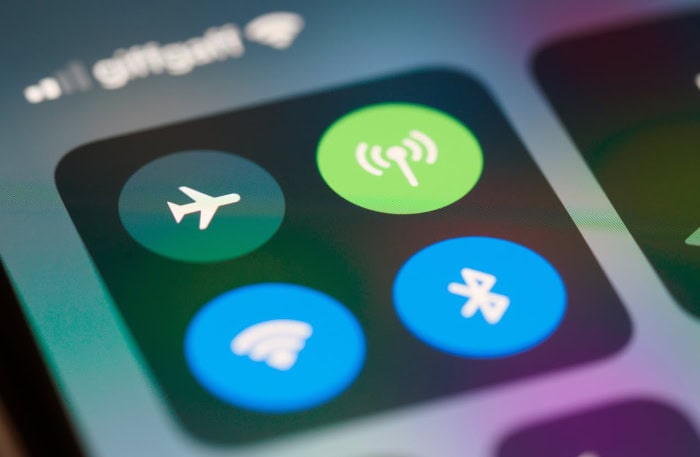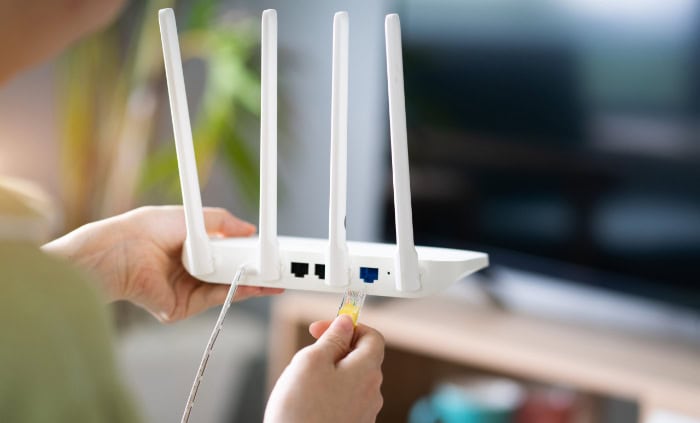Broadband vs. WiFi: Everything You Need to Know Explained

The terms broadband and WiFi are often used interchangeably, leading to confusion about their distinct roles in connecting us to the internet. While both are essential for accessing and sharing online content, they serve very different purposes.
Definitions and Core Concepts
Connecting to the internet often involves two components that are commonly misunderstood: broadband and WiFi. While they are both essential in modern life, their functions are distinct.
Broadband serves as the backbone of internet access, delivering the actual connection, while WiFi acts as the technology used to distribute that connection wirelessly across a local area.
Broadband
Broadband is the term used to describe high-speed internet access provided through various types of physical or wireless infrastructure. It ensures a continuous, reliable connection to the internet, typically delivered via fiber-optic cables, DSL lines, coaxial cables, or satellite systems.
This service forms the foundation of online connectivity for homes and businesses, providing the pipeline through which all internet traffic flows. The speed and stability of broadband depend on the specific technology in use and the quality of the provider’s infrastructure, but it is always intended to offer faster and more reliable access than older dial-up methods.
Without broadband, there is no internet to share or distribute within a space.
WiFi
WiFi is a wireless communication technology that uses radio waves to enable devices like smartphones, laptops, and smart TVs to connect to the internet without needing physical cables. It works by transmitting data from a router, which is typically connected to a broadband modem, to devices within a local area.
WiFi makes it possible to use the internet flexibly in homes, offices, and public spaces by eliminating the need for wired connections to each device. However, WiFi cannot function independently; it relies entirely on a broadband connection to supply the internet that it transmits wirelessly.
The quality of the WiFi signal depends on factors such as the distance from the router, physical obstructions, and the band or channel being used.
Interaction: Broadband as the Source, WiFi as the Distributor
Broadband and WiFi are often misunderstood as interchangeable, but their roles could not be more separate. Broadband provides the actual internet connection, often through a modem.
WiFi, on the other hand, is the convenient layer enabling multiple devices to access that connection wirelessly in a given space. Think of broadband as water flowing into your home via a main supply pipe, while WiFi acts as the sprinkler system distributing that water across your garden. Both are crucial but serve very different purposes.
Many devices in modern households, such as computers, gaming consoles, and smart home systems, depend on this interplay between broadband and WiFi to function seamlessly. While some devices can connect directly to broadband using Ethernet cables, WiFi remains the preferred access method due to its convenience and ability to support multiple devices simultaneously.
Common Misconceptions
A frequent misunderstanding is the belief that WiFi is itself a form of internet service. Many hold the misconception that WiFi replaces broadband or that purchasing a router alone will provide internet access.
These assumptions can lead to confusion when setting up or troubleshooting a network.
WiFi is simply a method for distributing the internet locally, not a service provider. A high-end router with excellent WiFi capabilities is useless for internet access if there is no broadband service to provide the connection.
Similarly, some people refer to their internet speed issues as “WiFi problems,” when the issue might lie with their broadband service. Clarifying these roles can avoid unnecessary frustrations and help users manage their networks more effectively.
Technical Differences and Performance

Broadband and WiFi serve distinct roles in providing and distributing internet access, and their underlying technologies highlight these differences. Broadband operates as the foundation of internet connectivity, using physical infrastructure or wireless transmission to deliver a stable connection.
WiFi functions as a convenience layer, leveraging radio waves to share broadband access wirelessly within a specific range.
Connection Types
Broadband relies on various technologies to deliver internet access, most commonly through physical infrastructure such as fiber-optic cables, DSL lines, or coaxial connections. Broadband can also be delivered wirelessly in some cases, such as through satellite or fixed wireless systems.
This reliance on physical or wireless infrastructure makes broadband the primary means of connecting homes and businesses to the internet. Its connection extends from the provider's network to a modem in a user’s space, acting as the starting point for online activity.
WiFi, on the other hand, functions by converting the internet signal provided by broadband into wireless signals using a router. Unlike broadband, WiFi does not require physical wiring to connect individual devices to the internet within its range.
Instead, it uses radio frequency signals, often at 2.4 GHz or 5 GHz, to communicate between the router and devices like phones, laptops, and smart TVs. While broadband enables the main connection to the internet, WiFi ensures that connection can be shared across multiple devices without the need for cables, making it more flexible but also more susceptible to environmental factors.
Speed and Stability
Broadband is generally known for its consistent speed and stability, especially when delivered through fiber-optic or cable networks. The physical infrastructure used in broadband, such as underground fiber lines, is less affected by external disturbances, ensuring a reliable performance over time.
Speeds are also determined by the service plan provided by the internet service provider (ISP), which can range from moderate speeds to gigabit-level connections capable of handling intensive online activities like 4K streaming or competitive gaming.
WiFi, however, is more prone to variability in speed and stability. Physical barriers like walls, furniture, or appliances within a space can interfere with WiFi signals.
Signal strength and speed also decrease as the distance between the router and connected devices increases. Additionally, interference from neighboring WiFi networks, especially in apartment complexes or densely populated areas, can disrupt performance.
The quality of the router and the number of devices connected simultaneously also play a significant role in determining WiFi speed and consistency. While modern WiFi technology has improved significantly, it still cannot match the stability of a wired broadband connection.
Coverage Limitations
Broadband has unlimited reach as long as the necessary infrastructure is present. It connects users to the internet globally, provided their location is serviced by an ISP.
The performance of broadband is not affected by the physical size of a home or business. Once connected, the network remains stable and consistent regardless of how far the end-user is from the ISP’s main network hub.
WiFi, in contrast, is designed to operate within a limited range. Typical WiFi coverage spans approximately 10 to 50 meters, depending on the strength of the router and environmental conditions.
While this range is usually sufficient for most homes, larger spaces or buildings with thick walls may require additional equipment like range extenders or mesh systems to ensure full coverage. Unlike broadband, which functions at a global scale, WiFi is inherently local and focuses on wireless connectivity within small, defined areas.
Practical Considerations for Users

When deciding how to set up and manage internet access, there are several important factors to keep in mind regarding broadband and WiFi. Cost, security, and device compatibility all play a role in determining how effectively these technologies can meet your needs.
Broadband provides the internet connection, while WiFi distributes it wirelessly, and both come with unique advantages and potential drawbacks.
Cost Implications
Broadband requires an ongoing subscription with an internet service provider, which forms the core expense of maintaining internet connectivity. The cost of broadband varies widely depending on the type of connection, the speed offered, and additional services included, such as modem rentals or bundled television packages.
Fiber-optic connections, for example, are often faster but more expensive than DSL or cable options.
WiFi introduces initial equipment costs, including the purchase of a router or mesh system to distribute the broadband connection wirelessly. High-performance routers designed to handle greater speeds or cover larger areas can further increase the upfront investment.
However, once the equipment is set up, WiFi does not add any recurring fees beyond the broadband subscription. Users with advanced needs, such as managing smart home systems or streaming high-definition content across multiple devices, may need to spend more on a quality router to ensure smooth performance.
Security Risks
Broadband connections delivered through wired infrastructure are generally more secure than wireless alternatives. Wired broadband relies on physical connections, such as Ethernet cables, which makes it difficult for unauthorized users to access the network without direct access to the hardware.
This inherent security can be beneficial for sensitive activities, such as online banking or work requiring confidential data.
WiFi, while convenient, is more vulnerable to security risks. Without proper configuration, open or poorly secured WiFi networks can allow unauthorized users to connect and potentially steal personal information or compromise devices on the network.
Password protection and the use of encryption protocols, such as WPA3, can significantly enhance WiFi security, but the added risk remains compared to the physical limitations of wired broadband. Regularly updating router firmware and changing passwords can further reduce vulnerabilities and ensure that only authorized individuals have access.
Device Compatibility
Broadband connections are compatible with devices that can be directly tethered to a modem or router via Ethernet cables, such as desktop computers, gaming consoles, or smart TVs. However, this method of connection is often limited by the number of ports available on the modem or router.
In most cases, only a small number of devices can be connected directly, which may not be sufficient for households with multiple internet-enabled devices.
WiFi provides a flexible solution, allowing a large number of devices to connect wirelessly without physical constraints. Smartphones, tablets, laptops, and even smart home devices, such as thermostats and security cameras, rely on WiFi for seamless connectivity.
The ability to connect multiple devices simultaneously makes WiFi indispensable for modern households and workplaces. However, as more devices join a single WiFi network, the available bandwidth is divided among them, potentially reducing speed and performance during high usage. Ensuring that the router can handle the required capacity is critical for maintaining an efficient connection.
Use Cases and Application Scenarios

Broadband and WiFi both play crucial roles in enabling internet access, but their practical applications differ significantly based on location, usage demands, and troubleshooting contexts. Broadband is the foundation for fixed internet connectivity, while WiFi introduces flexibility and portability for day-to-day activities.
Home vs. Mobility
Broadband is ideal for fixed locations such as homes and offices, where stability and speed take precedence over portability. Wired broadband excels in settings where devices remain stationary, such as desktop computers in workplaces or gaming setups that demand high performance.
Its consistent connection ensures reliable internet access for bandwidth-heavy tasks, from streaming 4K content to hosting virtual meetings. Broadband becomes a dependable solution for locations that require uninterrupted connectivity without concern for movement.
WiFi, on the other hand, empowers mobility within a defined area, offering users the freedom to connect wirelessly while moving from room to room. It enhances convenience for portable devices such as smartphones, tablets, and laptops, making it particularly useful for homes and workplaces where multiple devices need simultaneous access.
WiFi also allows users to enjoy internet connectivity without the clutter of cables, making it suitable for casual browsing, streaming, or working on the go within the range of the router. However, mobility beyond the router’s reach necessitates alternative solutions, such as mobile data networks or public WiFi hotspots.
Bandwidth Demands
Broadband is best suited for activities that require significant data transfer and connection stability. High-demand applications like 4K streaming, online gaming, and large file downloads rely on the speed and reliability of broadband connections to ensure smooth performance without interruptions.
Fiber-optic broadband, in particular, excels in handling heavy bandwidth usage, offering users the ability to run multiple data-intensive tasks simultaneously without compromising quality. Such robust performance makes broadband indispensable for households or offices where consistent speed is necessary for productivity and entertainment.
WiFi can handle moderate bandwidth demands effectively, provided the environment is free from interference and the router is positioned optimally. For general activities like browsing, streaming standard-definition videos, and using social media, WiFi performs well as long as the number of connected devices remains reasonable.
However, bandwidth-intensive tasks such as multiplayer gaming or ultra-high-definition streaming may experience slower speeds or lag, especially when multiple users are sharing the network. WiFi networks subjected to interference from other devices or neighboring networks may further struggle to meet high-performance demands, emphasizing the need for careful placement and configuration.
Troubleshooting Context
Problems with broadband and WiFi manifest differently, making it important to identify the source of connectivity issues to address them effectively. Broadband-related issues are often linked to ISP outages, infrastructure problems, or modem malfunctions.
If internet access is completely unavailable, checking with the ISP for service updates or testing the modem connection can help pinpoint the problem. Broadband disruptions are typically more widespread and require external resolution from the service provider.
WiFi-related issues, however, are often localized and involve the router or environmental factors. Weak signals, dropped connections, or slow speeds can arise from poor router placement, physical obstructions, or interference from other devices.
Adjusting the router position, updating firmware, or switching to a less congested channel can help restore optimal performance. Additionally, overcrowded networks with too many devices pulling from the same WiFi connection can cause lag, making it necessary to reevaluate device usage or upgrade to a router with higher capacity.
Troubleshooting WiFi problems typically involves on-site changes to the network setup, allowing users to regain connectivity without waiting for external assistance.
Conclusion
Broadband and WiFi work together seamlessly to deliver the internet experience we rely on daily. Broadband serves as the backbone, providing the actual internet connection through wired or wireless infrastructure, while WiFi offers the convenience of distributing that connection wirelessly to devices within a specific area.
Together, they create a system that balances stability and mobility, enabling users to stay connected in a variety of environments.
When setting up or optimizing your internet connection, it’s important to consider your unique needs. Speed, reliability, and budget play vital roles in choosing the right broadband plan, while mobility, device compatibility, and coverage are essential factors when configuring a WiFi network.
Balancing these considerations ensures a setup that meets everyday demands, whether you’re working, streaming, gaming, or simply staying connected with others.


